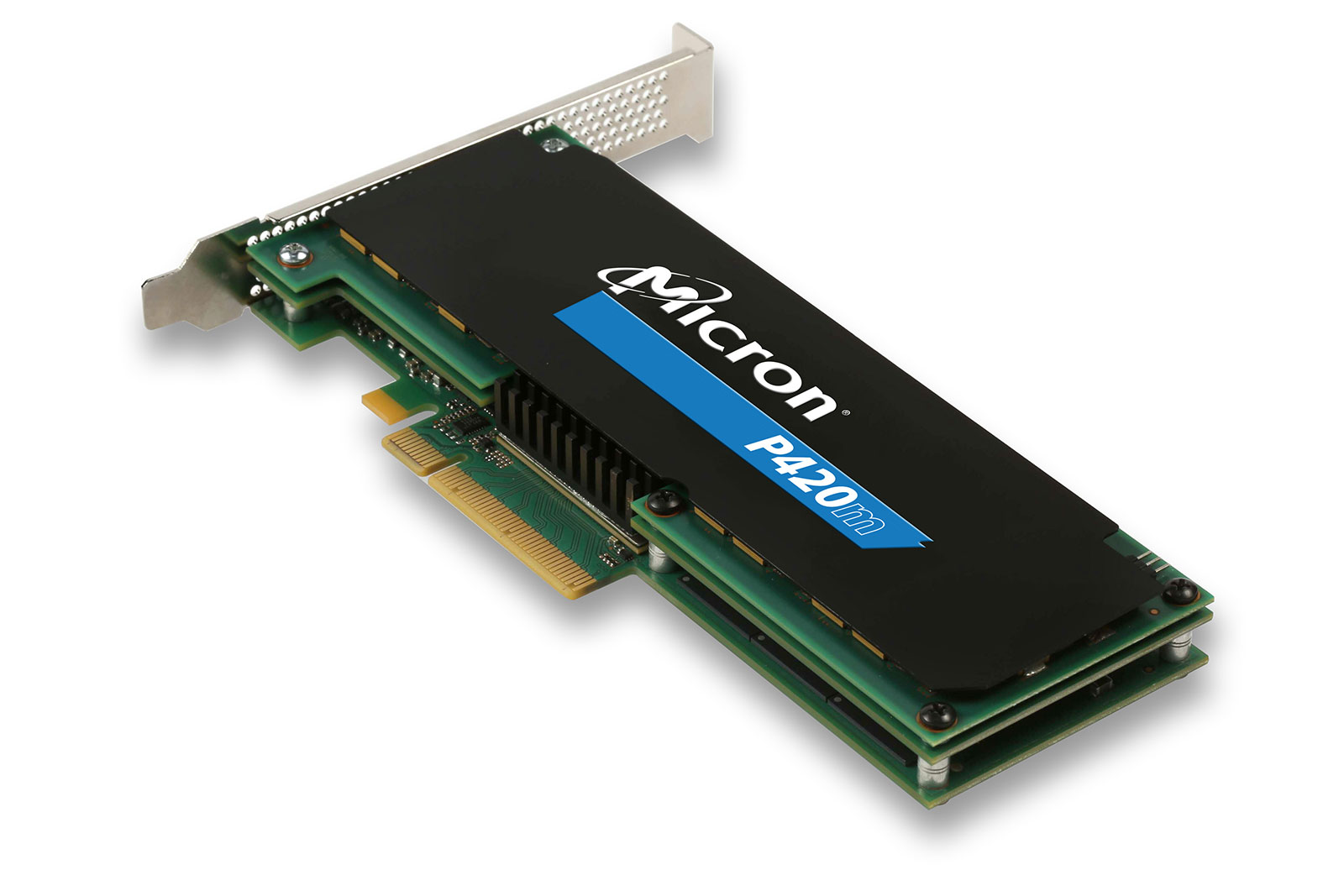The Micron P420m, announced earlier this summer, is a half-height, half-length (HHHL) PCIe storage device that augments Micron’s PCIe enterprise storage line. The P420m has a lot to live up to. If you remember back to last October, we reviewed the Micron P320h and came away thoroughly impressed. Massive amounts of speed, endurance and parallelism were at our disposal. With the P420m, Micron is at it again, but this time they brought MLC NAND to the table instead of the bulletproof SLC NAND they used in the P320h.
Making the move to MLC gives Micron the ability to push PCIe storage to an enterprise audience that the P320h couldn’t reach. The P420m gets a nice capacity bump, doubling the user amount of the P320h. That means customers now get the option of 700 and 1400GB.
Micron was mum on pricing, but assured us that with their vertical integration, they would be price competitive. As good as the P320h is in terms of performance, it is expensive. If Micron can cut the price significantly, they have a great chance to cut into the lower end of the PCIe storage market.
The P420m shares so many of the same components with the P320h that there isn’t really anything innovative to come out of this design. But, that is not to say it isn’t impressive. The P420m is capable of 750,000 read IOPS and 3.3GB/s in sequential reads. Both numbers are on par with the P320h. The move to MLC primarily hurt the write performance. The 1.4TB P420m can handle 95,000 random write IOPS, but only 630MB/s for sequential writes. The 700GB version falls even farther behind, with only 50,000 IOPS and 600MB/s.
As an enterprise SSD reviewer, one thing we see in almost every product brief is how much better SSDs are than mechanical, rotating drives. At this point, we get it. SSDs are great and they destroy HDDs. We see the same thing with PCIe SSDs. Amazing performance that destroys SATA/SAS SSDs, even in RAID systems. In this review, we decided to put that claim to the test. But, instead of pitting the P420m against any old SSD, we are going to put it up against a quartet of HGST SSD800MM’s. You might remember the HGST drive from our 12Gbps SAS review. It was, by a large margin, the fastest 2.5″ drive we have ever tested.
In order for this to a somewhat fair fight, here are some assumptions that were made. The first is that even though HGST and Micron don’t list MSRPs, we assume that 2 x SSD800MM plus an LSI 9300-8e will be more expensive than the P420m. We will also concede that the P420m takes up far less space than the SAS competition. Finally, the P420m is rated for 30W at load, while 2 x SSD800MM and the 9300-8e is roughly 28W – we’ll call that a draw. At this point, the P420m has a clear lead, but does it have the performance to maintain that lead? Before we get to the results, lets tear apart the P420m for a closer look.
 The SSD Review The Worlds Dedicated SSD Education and Review Resource |
The SSD Review The Worlds Dedicated SSD Education and Review Resource | 


Great review. Did you know tweaktown got Sandisk’s A110 PCIe SSD to review?
Yes…as well as Tom’s. It sometimes works like that and, if you stay tuned, you may see an exclusive M.2 report in the near future that we were lucky to grab.
page four, blue graph at the bottom (4K Read Steady State, 1 Hr at QD256) shows “LATENCY (ms)” in the left vertical axis name with values from 700.000 to 800.000.
Obviously it’s NOT latency, but it is IOPS which is really fantastic result. The sentence right below the graph clearly says this, I just wanted to point out as I know Les reads these comments and I’m pretty sure he will correct the graph very quickly.
And for sure, target audience knows to separate apples from oranges so it’s really obvious for us. Not too much average Joes are going to buy 1.4TB PCIe drive for three thousands to speed up loading of Windows 7 or Near Cry or whatever the game name is 🙂
Thank you for pointing that out! Will get to it.
How do you make this nice charts ?
Does it support NVMe?
this drive does not report TRIM support 🙁